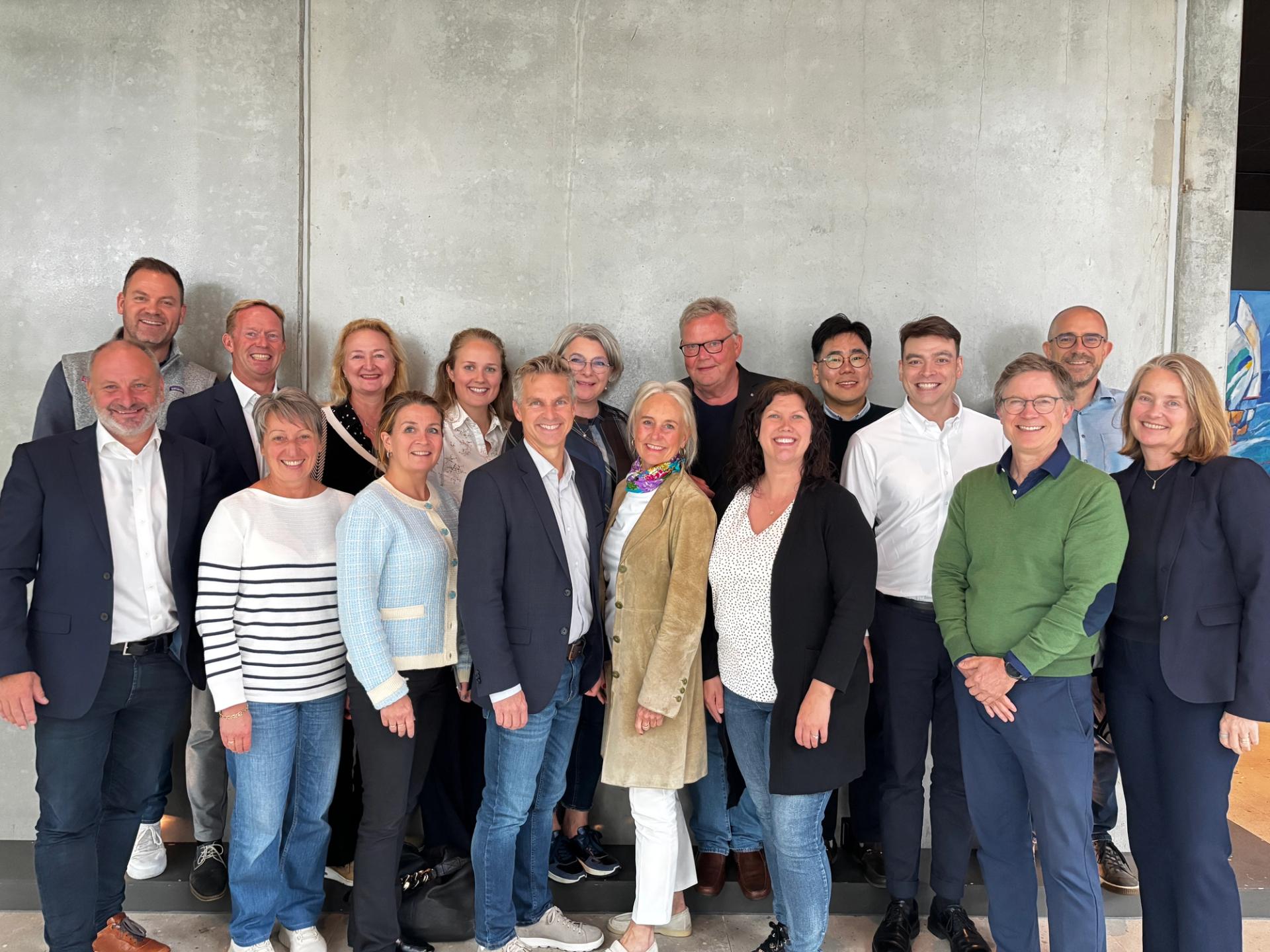

Norwegian data centres target supply chain emissions with creative measures
Published 30 June 2023 (updated 30 Apr 2025) · 6 min read
From low-carbon construction to aquaculture synergies, Norway is setting the global standard for emissions reduction in the data centre industry.
“Norway is emerging as a pilot country for data centre sustainability.”
“We have all the preconditions: abundant renewable energy, free cooling in a chilly climate, and a stable political and social system, to name a few.”
— Benedicte Fasmer Waaler, Investment Manager, Invest in Norway
“Now that the sector is maturing, data centres are taking responsible and creative steps towards increased sustainability and transparency.”
Fasmer Waaler’s statement seems logical, but where’s the proof? It lies in the reporting, especially numbers based on the Greenhouse Gas (GHG) Protocol. The GHG Protocol provides the world’s most widely used greenhouse gas accounting standard, dividing emissions into three “scopes”, or categories. (See text box.)
Figures show that Norwegian data centres have eliminated almost all emissions related directly or indirectly to fuel combustion, categorised as Scope 1 and Scope 2. Now the industry is collaborating to reduce Scope 3 emissions from a company’s supply chain, own waste, travel and the like. The result is some exciting new initiatives.
Norway’s natural resources bestow a special advantage. The wet, mountainous terrain enables hydropower to meet almost all the industry’s power needs, making data centres free of Scope 1 emissions. Scope 2 emissions are extremely low thanks to the supply of renewable power and a stable power grid which means back-up power generators never need to run, except for testing. Also in Scope 2, the reuse of waste heat is starting to take off.

Supply chain emissions are tricky to detect
Most Scope 3 emissions from the data centre industry derive from building construction.
“Reducing Scope 3 emissions is challenging because it’s not easy to collect information and data from the supply chain,” says Stine Bjønnstu Holthe, Head of Sustainability at Bulk Infrastructure, one of Norway’s leaders in building and operating sustainable data centres, fibre networks and industrial real estate.
Bulk has nonetheless managed to make notable progress. In line with the company’s goal of net-zero emissions in all scopes by 2050, Bulk has created a sustainability framework that encompasses the perspectives of location, asset, ecosystem and society.
“First we assess building location vis-à-vis renewable energy. Then we eliminate emissions from the construction site. We also look at impact on the ecosystem and how we can provide heat in the local area,” explains Bjønnstu Holthe.
“Our sustainability efforts prioritise equal emphasis on all aspects, reflecting our holistic commitment to a better future. Location is key as we align our solutions with sustainability goals. We optimise resource use throughout the asset’s life cycle. Collaborating with partners is vital for impactful change. We also value social and governance factors within the larger ecosystem,” she continues.
Cutting construction emissions is crucial
Bulk works actively to eliminate embodied carbon emissions, the millions of metric tons of carbon released during the life cycle of building materials, including extraction, manufacturing, transport, construction and disposal. Concrete, steel and insulation are examples of high-carbon materials.
Bulk seeks to replace materials that have a large carbon footprint with low-emission alternatives such as wood and low-carbon concrete. The company focuses on finding scalable solutions that are both economically viable and environmentally sustainable. In an innovative decision, Bulk chose to renovate an old printing press building to house Norway’s largest internet gateway, OS-IX Oslo Internet Exchange, rather than construct a new building from scratch.
“Collaborating with the supply chain is crucial for gathering the necessary information for making informed decisions about sustainability,” says Bjønnstu Holthe.

Other data centre operators take their own innovative approaches
Green Mountain has avoided most construction emissions by locating a facility inside a mountain – previously a high-security NATO ammunition storage facility.
Similarly, Lefdal Mine Datacenter – one of the largest in Europe – is located underground in an abandoned mine.
In both cases, reuse of existing infrastructure greatly reduces Scope 3 emissions.
Cool year-round temperatures and proximity to chilly fjords reduce the need for powered cooling.
Surplus heat – come and get it!
Studies show that in order for data centres to achieve negative Scope 2 emissions, approximately half of their waste heat must be utilised. This presents a challenge, as up to 85 per cent of the energy going into a data centre leaves as waste heat.
“The data centres have waste heat to give away for free, but costly infrastructure is often required to connect this heat with potential users,” says Benedicte Fasmer Waaler of Invest in Norway.
However, a few industries are waking up to the vast potential of this free, zero-emission energy source. Take aquaculture, for example. Green Mountain has signed an agreement with Hima Seafood on the reuse of waste heat by the world’s largest land-based trout farm. A similar agreement has been signed with Norwegian Lobster Farm.
“These projects are the first of their kind and have garnered worldwide attention. The concept can be applied in any country,” says Tor Kristian Gyland, who was CEO of Green Mountain when it entered into these agreements.
Moreover, Trekraft has embarked on a preliminary project with Bulk at its N01 campus in Kristiansand to use waste heat from data centre operations to dry wood in a more efficient and eco-friendly way. Wood can be dried five times faster than with normal open-air drying, and no transshipment or additional transport is required.
In a collaboration between STACK Infrastructure and Celsio, Oslo’s district heating provider, STACK’s Oslo1 data centre provides heat and hot water for up to 5 000 Oslo homes. This is the first time that heat reuse technology has been retrofitted to a data centre in Norway to supply reutilised, emission-free district heating.
Collaboration is Norway’s superpower
These initiatives point to one of Norway’s greatest strengths: the culture of cooperation. “We have high levels of trust among individuals and groups in society. It’s easy to get people to work together and share knowledge in a flat social structure like ours,” says Fasmer Waaler.
After going it alone for a while, data centre operators have joined forces in a sustainability working group under the Norwegian Data Center Industry association. The companies involved are AQ Compute, Bulk, Coromatic, Eviny, Green Mountain, Lefdal Mine Datacenter, STACK Infrastructure, Statkraft and Vertiv.
“We’re seeing a trend towards transparency and sharing of methodology. This allows us to learn from each other. For instance, we have started to share our emissions numbers, which can be used as a benchmark for measuring sustainability,” explains Bjønnstu Holthe.
The association also serves as the voice of the industry vis-à-vis the regulatory authorities. This is crucial in Norway, where the government plays a key role in supporting the industry and establishing policy. Norway launched its first data centre strategy in 2018, and a third version will be published in summer 2023.
Collaboration across sectors has taken off as well. Through Agder Industrial Symbiose, a regional cooperation platform, data centres will help to develop a circular economy along the coast of Southern Norway, in part by providing waste heat for reuse. Bulk collaborates with the platform to find solutions for heat reuse at its N01 campus in Kristiansand.

Maturing industry walks the sustainability talk
With Scope 1 and Scope 2 emissions largely solved, the industry has time to address broader environmental issues, including Scope 3.
“The Norwegian data centre industry has matured over the past few years. We have gone from talking mostly about renewable energy to addressing sustainability as a whole. This shift has come from within the industry itself and from the EU regulatory environment,” says Bulk’s Stine Bjønnstu Holthe.
Invest in Norway’s Benedicte Fasmer Waaler agrees. “Our leadership on sustainability shows the industry’s potential to achieve net-zero emissions by 2050,” she concludes.

